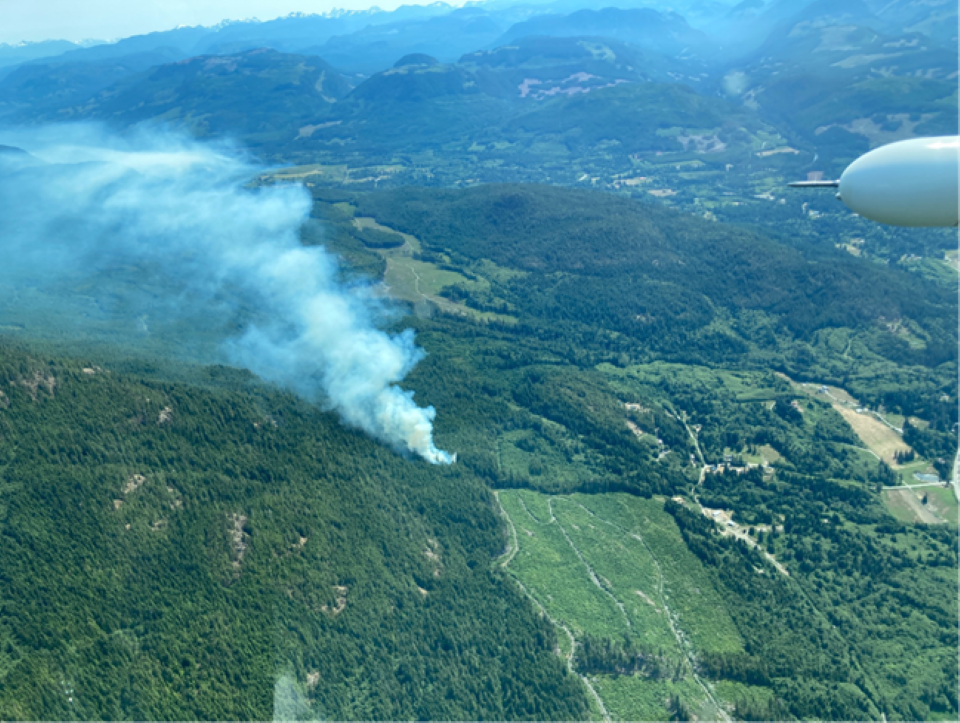Less than a third of the 46 new wildfires that sparked over the long weekend in B.C. were caused by humans, according to the BC Wildfire Service.
Quick reporting from the public allowed firefighters and aircraft to extinguish, hold or bring under control 35 of the new blazes.
In B.C.’s northeast, lightning sparked an out of control wildfire near the Chilako River Monday. The region is home to a number of the province’s largest fires this season, including the Donnie Creek wildfire, which at 571,512 hectares is the largest in the province’s recorded history.
The Nation River and Big Creek wildfires have together burned more than 50,000 hectares of land and remain “out of control” — a designation given to fires that continue to spread despite efforts to suppress the flames.
By July 4, more than a million hectares had burned across the province. The latest wildfires add to what is already the third worst wildfire season in B.C.’s recorded history.
Most big fires in Canada are sparked by lightning. But in the Prince George Fire Centre this season, 52 per cent were human-caused and preventable, according to the BC Wildfire Service. And on Vancouver Island, a wildfire burning southeast of Sayward is thought to be the latest ignited by human activity.
The hotter the weather and drier the forests, the more likely big fires will spread. Those conditions have been met at unprecedented levels across large parts of the province after a spring heat wave melted much of B.C.'s snowpack, contributing to what could soon be some of the lowest summer river levels in the province’s history.
Fire Danger — a relative index of how easy it is to ignite vegetation, how difficult a fire may be to control, and how much damage a fire may do — has reached "very high" to "extreme" levels across much of B.C.
And late last week, B.C.’s Ministry of Forests reported Level 4 drought conditions across 12 river basins, including on Vancouver Island, the Sunshine Coast, Metro Vancouver, the Upper Fraser, and the Peace. Level 4 droughts suggest fish could be exposed to lethal temperatures and regulatory action should be considered to “avoid significant or irreversible harm to aquatic ecosystems.”
B.C. is far from the only part of the country on fire. By Tuesday, more than 8.4 million hectares had burned across Canada, making it the country's worst wildfire season on record with at least two months left in B.C.’s wildfire season.
The enormous wildfires have led to dangerously smoky skies in many parts of North America. But so far, B.C.'s densely populated coastal regions have largely avoided contamination. On Tuesday, however, concentrations of fine particulate matter raised Metro Vancouver’s Air Quality Health Index to moderately risky levels.





